Top/Proximity sensor
Proximity sensorLast-modified: 2012-06-03 (日) 15:00:00
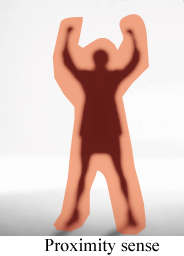 A proximity sense is the sense which man does not have.
It is the sense that the tactile sense spread to the several centimeters upper from the skin. 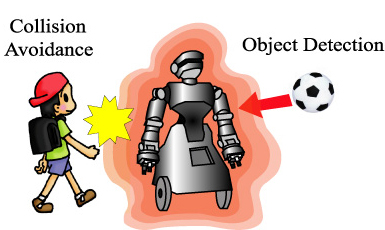 "Proximity Sensor" is the sensor that complements the gap between vision sensors and tactile sensors. The following video shows the output of a proximity sensor array. The photo reflector has been arranged in the shape of 16x16 matrix, and proximity distance information is visualized. In order to measure distance from the reflective intensity of the projected light, when an object becomes far, the outline will fade, and when an object approaches, the outline will become clear. Net-Structure Proximity SensorThis sensor is based on Net-Structure Tactile Sensor.
In this sensor, infrared LED and photo-transistors are used as the detection elements.
The sensor outputs the center position of the nearby object and the
distance from the sensor surface.
structureThe circuit diagram of Net-Structure Proximity Sensor are shown below.
An infrared LED is allocated in a set with each of the photo-transistors.
The infrared light emitted from the LED reflects on a nearby object,
and then is radiated to the array of photo-transistors.
Here, current distribution occurs in the circuit according to the difference of the amount of
the light received by the photo-transistors. 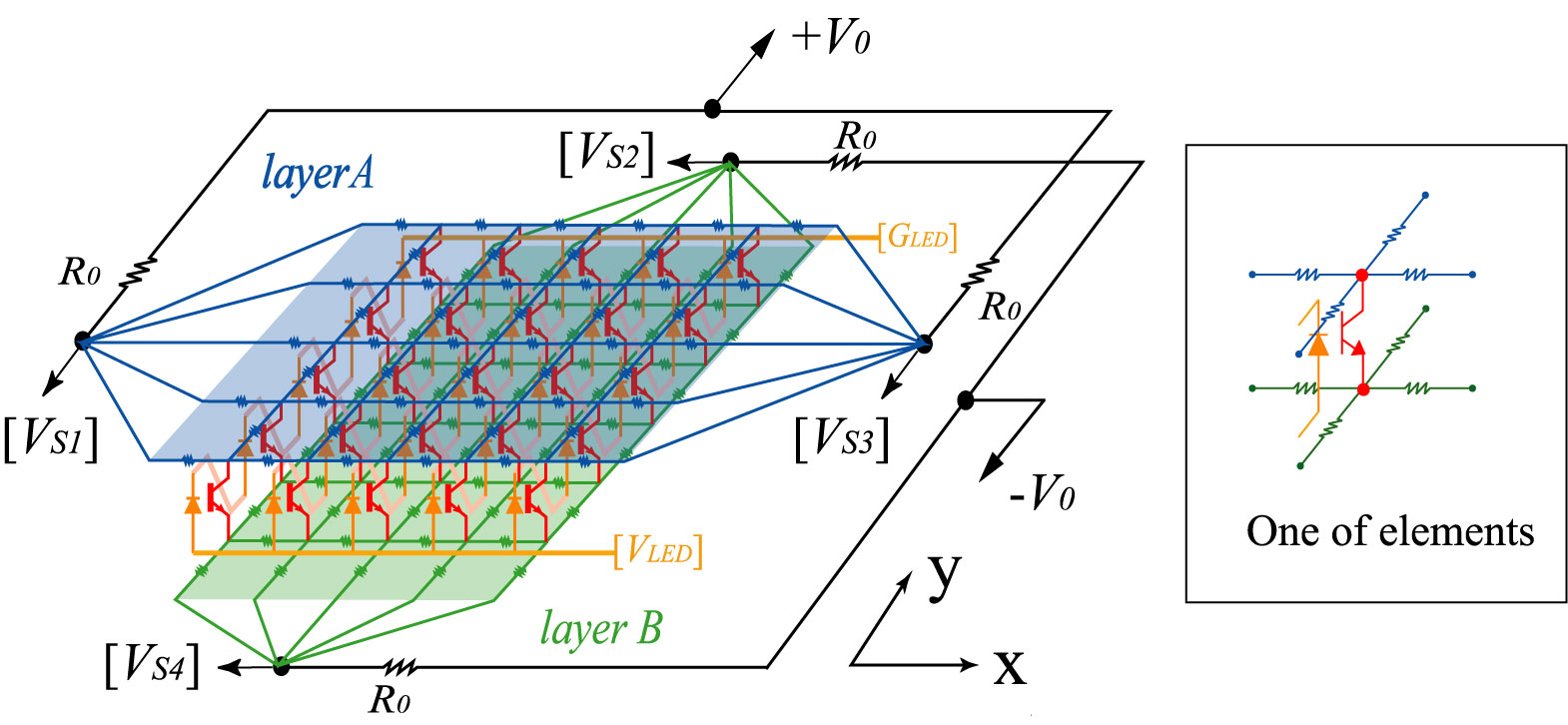
example of operationThe following shows the example of operation.
Sensors are mounted on the top and the side of the manipulator.
The sensor at the top tracks a white ball,and the sensor at the side
avoid the white ball when it approaches. 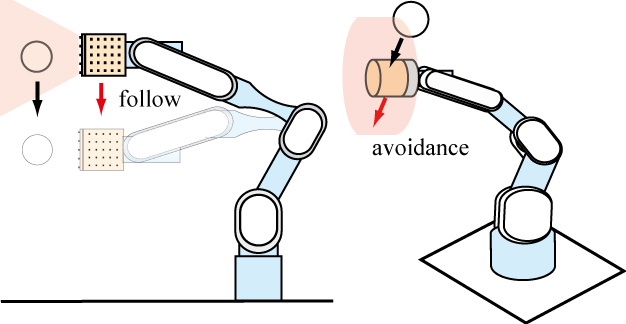 When an appearance of man is detected while tracking a white ball, a manipulator will carry out avoiding action. Explanation in English(Net-shaped proximity sensor : DigInfo) Omni-Directional Net-Structure Proximity SensorA new construction of Net-Structure Proximity Sensor which can be implemented on cylindrical surfaces and can detect 360 degrees all around seamlessly are proposed. Ring-Shaped Proximity Sensor:Here, we introduce a new design of Net-Structure Proximity Sensor.
The basic structure is the same as Net-Structure Proximity Sensor.
But photo-transistors are arranged on the edges of the m x n matrix as indicated in figure. This sensor is implemented on a cylindrical surface by covering in circumferential direction. Here, each photo-transistor faces outside in radial direction. In this geometric arrangement, the output of the center position (xc,yc) corresponds to the direction of a nearby object, and so the sensor can detect 360 degrees all around seamlessly. We call this sensor "Ring-Shaped Proximity Sensor." 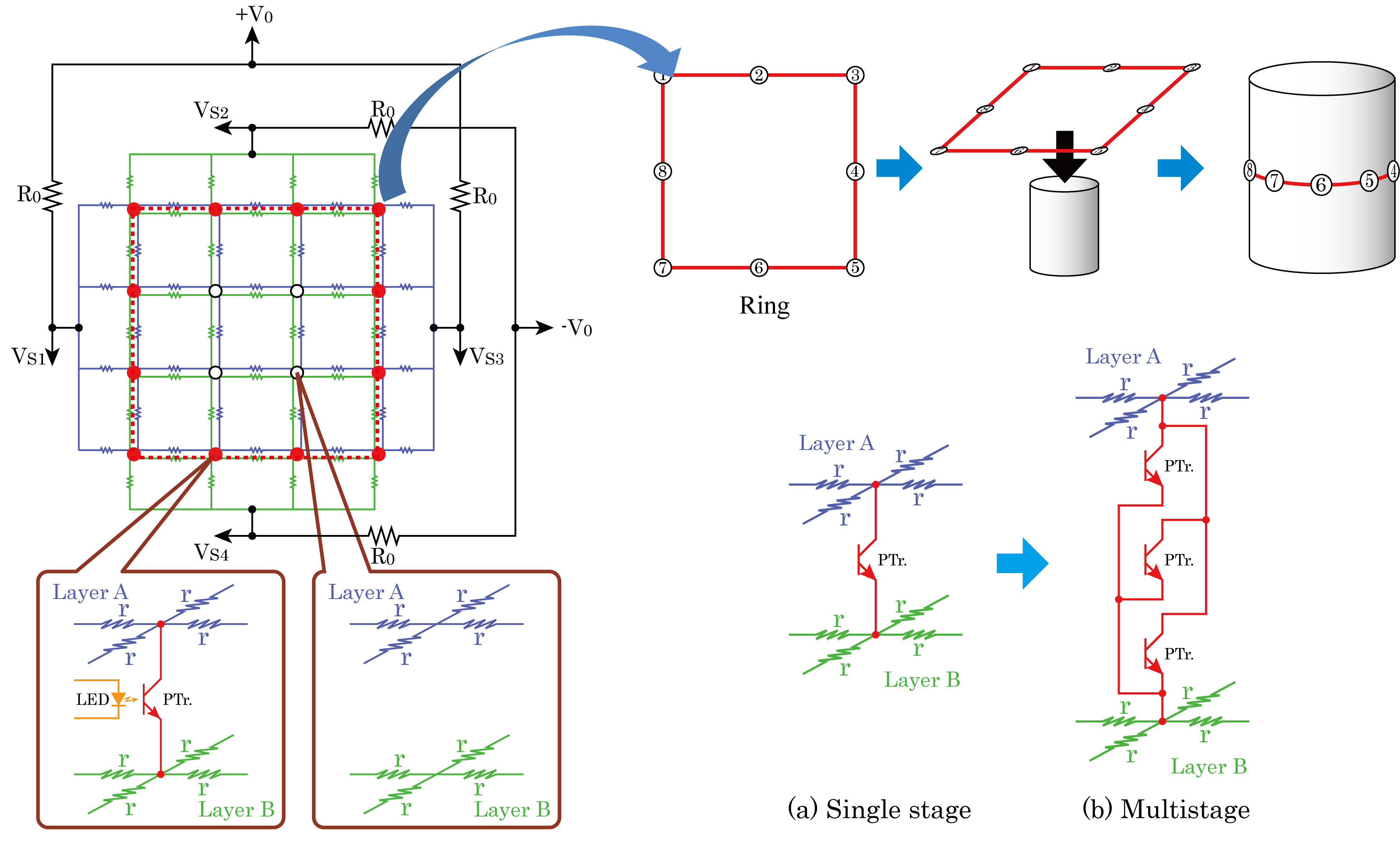 Multistage Arrangement of Photo-TransistorsSince only one photo-transistor is allocated in height direction, the detectable area is narrow in height direction. To solve this problem, we adopt multiple arrangement of photo-transistors at each lattice point. Here, the number of photo-transistors is not limited as one at each lattice point. So, considering parallel-connected photo-transistors as one element, multiple photo-transistors can be arranged in the height direction as shown in figure. example of operationThe overview of the model is shown in figure. This model is designed for implementing on a mobile robot.
The diameter of the sensor is 600[mm], and the height is 300[mm]. 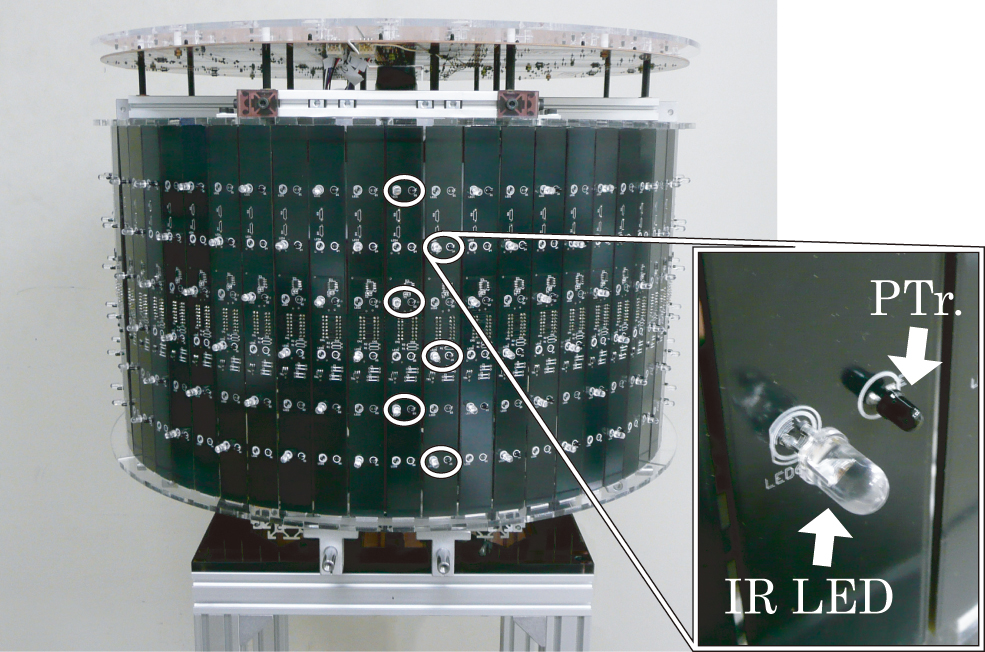 The following video shows how it works. When an object is aproaching, the direction and distance of the object are detected. When approaching objects are more than one, the sensor serves as scanning mode and then sensor outputs the direction of approach objects, distance, and a number. example application to mobile robotThe following video is an experiment of a mobile robot. Two part of the robot are cover by Proximity sensor array. One is on the top of the robot, another is on a cylindrical surface. The proximity sensor on the top detects an object and moves to object position automatically. Moreover, when an obstacle is approached, then the sensor of the side will carry out avoiding action. An obstacle avoidance experiment in indoor environmentThe following video shows autonomous movement using LRF and our proximity sensors. An environmental map and a global action plan are built using ROS(Robot Operation System). ROS is the middleware for robot presented by Willow Grage. The environmental map is used for movement to the destination. To the obstacle which is moving, avoiding action is carried out using a proximity sensor. |
![[Shimojo Laboratory] [PukiWiki]](image/comm.jpg)